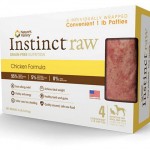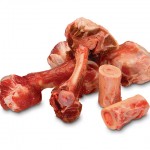By Robert Mueller
 Environmental allergies are the biggest trigger. Environmental allergies are the biggest trigger. |
Detoxification is an essential part of the body’s metabolic process. The key organ that is involved in this process is the liver. Because the liver is constantly bombarded with toxic chemicals both of internal and external origin, a wide range of toxins need to be neutralized.
Many factors contribute to the accumulation of toxins in the body. These factors include:
1. Nutritional deficiencies caused by soil depletion and improperly formulated diets.
2. Specific imbalances created by processed food (kibble).
3. Drugs such as acetaminophen, phenobarbital, prednisone etc.).
The damage caused by our external environment contributes the majority of the toxins that the liver has to detoxify. It is estimated that there are over 60,000 toxic chemicals in the environment today, more so than any time in previous history. Toxic chemicals are found in everything our pets eat, drink, and breathe, whether or not it is indoors or outdoors. We know that exposure to herbicides, pesticides, household chemicals, food additives, and other environment toxins create chronic health problems.
When the liver is over-exposed to toxins, it can’t do its job, thus allowing the body to accumulate toxins and sickening our pets in various ways. An overburdened and undernourished liver is known to be the root cause of many chronic diseases. The specific condition that we discuss today is the effect on the immune system and skin allergies.
 Detoxification can be seen through the skin. Detoxification can be seen through the skin. |
The immune system is the “policeman” of the body. The weakening of this important safeguard mechanism is the root cause of the majority skin allergy conditions. One important point to remember is that the skin, being the largest organ in the body, is also the easiest route of toxins out of the body. One would think that toxins would be best removed through the feces or urine but this is not true. I always caution our customers that skin conditions may worsen before getting better once they switch to our BARF diet. It requires patience to stay the course and let the detoxification process eliminate the root cause of the skin allergy.
Once you make the switch to the BARF diet, make the needed environmental changes, and work with more holistic treatments, you will see miraculous changes happen. If you work with natural healing substances and holistic therapies such as herbs, supplements, homeopathy, acupuncture and aromatherapy you will witness the results of removing the residue and effect of drugs, vaccines, anesthesia, steroids, chemicals and any other infective agents. The animal will go through a natural detoxification process.
 Vaccines can make Vaccines can makethings worse. |
It is a good procedure to implement a detox program at the beginning of treating any animal, in order to clear the residues and harmful effects from all toxins that have accumulated in the body. Symptoms, such as skin allergies, are the immune system’s way of expressing weakness and crying out for help. Once toxins have damaged the immune system, it has to work harder to protect the body. Eventually, the immune system becomes overwhelmed, and various problems and symptoms develop that demand medical treatment.
Usually the accumulation of toxins happens over a long period of time and it is therefore unreasonable to expect immediate results when switching to the BARF Diet or any raw food diet. Detox takes time – be patient!
 |
The importance of using detoxification cannot be overstated, and requires diligence in staying with the course of treatment. Needless to say, the first and most important step is switching your pet to a fresh raw meat diet – the BARF Diet!
The majority of our customers that come to our company and switch their animals to our diet do so because conventional treatments are not working. For example, the use of steroids masks the root cause and further damage the immune system. It gives temporary relief but fails to give long term benefits and many vets today would agree with this.
Source:
Robert Mueller, BSc, Pharm. is a registered pharmacist, author of “Living Enzymes”











